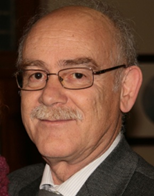|
CHI
SIAMO

|
ARGAL è
l’acronimo di: Associazione per la Ricerca della
Genesi delle Anomalie LENR e come dal suo statuto,
si propone di investigare attraverso varie
metodologie sperimentali, le condizioni di
attivazione di tali anomalie. Le attività pregresse
verranno riprese in questo sito web per indicare
quale percorso ci ha condotto fin qui e quali sono
state le evidenze sperimentali che ci hanno convinto
della realtà di questi fenomeni. Le attività che
l’associazione ha condotto dalla sua fondazione,
quelle più significative, verranno qui sintetizzate
a beneficio dei progressi in questa ricerca e dei
visitatori che ci auguriamo numerosi. |
|
ARGAL is the
acronym of: Association for the Research of the
Genesis of LENR Anomalies and as its statute, it is
proposed to investigate through various experimental
methodologies, the conditions of activation of such
anomalies. The previous activities will be taken on
this website to indicate which path has led us to
here and what were the experimental evidences that
convinced us of the reality of these phenomena. The
activities that the association has carried out
since its foundation, the most significant ones,
will be summarized here to the benefit of progress
in this research and of the many visitors we hope
for. |
 |
Il Dr.
Ubaldo Mastromatteo si è laureato in
Fisica all’Università di Roma (“La
Sapienza”) nel 1974 Dopo un anno di servizio
nell’esercito, ha lavorato come insegnante
fino al 1976; nello stesso anno entra a far
parte di STMicroelectronics, a quel tempo
SGS-Ates. Nel centro di Ricerca e Sviluppo
di Cornaredo (Milano) ha trascorso molti
anni lavorando sui processi di silicio per
la produzione di “Smart Power”, dispositivi
elettronici integrati per applicazioni in
sistemi dedicati in cui STM è leader
mondiale. Dal 1998 la sua attività
principale è stata rivolta alle tecnologie
non convenzionali per l’integrazione in
Microsistemi complessi di micromeccanica,
microfluidica e funzioni ottiche. Come
esempio di questi sistemi possiamo fare
riferimento ai Lab On Chip per applicazioni
biomediche, a memorie non volatili del tipo
“Probe Storage”, guide d’onda ottiche
integrate su silicio per sistemi di
comunicazione basati su fibra ottica.
|
|
Il suo
contributo al portafoglio IP per
STMicroelectronics è consistito in più di 70
brevetti internazionali rilasciati; è stato
coautore di numerose pubblicazioni nel campo
dei MEMS e l’integrazione dei
semiconduttori. E’ stato parte del comitato
direttivo di AISEM (Associazione Italiana
Sensori e Microsistemi) e della conferenza
EUROSENSORS. Presso l’Università di Milano
Bicocca (Facoltà di Medicina) ha insegnato
“Biosensori e Nanotecnologie” per il corso
di laurea in “Biotecnologie Mediche”.
Dal 1994 ha iniziato a dedicare attenzione
ai cosiddetti fenomeni di “fusione fredda” e
dal 2010 sta lavorando su un progetto
riguardante la possibilità di utilizzare
materiali nano strutturati in sistemi
relativamente di piccole dimensioni che
sfruttano LENR (reazioni nucleari a bassa
energia) per la produzione di quantità
elevate di energia termica. Ha terminato la
sua carriera lavorativa in
STMicroelectronics come ST Fellow.
Nel 2015 insieme ad altri ricercatori ha
costituito un’associazione scientifica per
continuare le ricerche sulle anomalie LENR
iniziate in STMicroelectronics nel 1994.
L’associazione è denominata A.R.G.A.L. in
cui riveste la carica di Presidente. |
 |
|
Dr.
Ubaldo Mastromatteo received a Laurea degree
in Solid-State Physics from Rome University
(“La Sapienza”) in 1974. After one year of
service in the army, he worked as teacher
until 1976; in the same year he joined
STMicroelectronics, at that time SGS-Ates.
In the STM, R & D center of Cornaredo
(Milan), he spent many years working on
silicon processes for manufacturing “Smart
Powers”, integrated electronic devices for
application in dedicated electronic systems
in which STM is worldwide leader.
Since
1998 his main activity is on non
conventional technologies for the
integration in complex Microsystems of
micromechanical, microfluidic and optical
functions. As an example of these systems we
can refer to Lab On Chip for biomedical
applications, Probe Storage for very high
density non volatile memories, Integrated
Optical waveguides and components for fiber
optics based communication systems.
His contribution to IP portfolio for
STMicroelectronics consists in more than 70
released international patents; He is
coauthor of several papers in the field of
MEMS and semiconductor integration. He is in
the steering committee of AISEM (Italian
Association for Sensors and Microsystems)
and EUROSENSORS conference.
In the University of Milano Bicocca (Faculty
of Medicine) has taught “Biosensors &
Nanotechnologies” for the “Medical
Biotechnologies” Laurea degree.
Since
1994 started to dedicate attention to the so
called “Cold Fusion” phenomena and from 2010
is working on a project concerning the
possibility of using nanostructured
materials in relatively small size systems
exploiting the LENR (Low Energy Nuclear
Reactions) for the production of high
amounts of thermal energy. Retired since
April 2014 from STMicroelectronics, in 2015
he founded a scientific association for
research on LENR anomalies (A.R.G.A.L.) of
which he is president and scientific advisor. |
 |
|
|